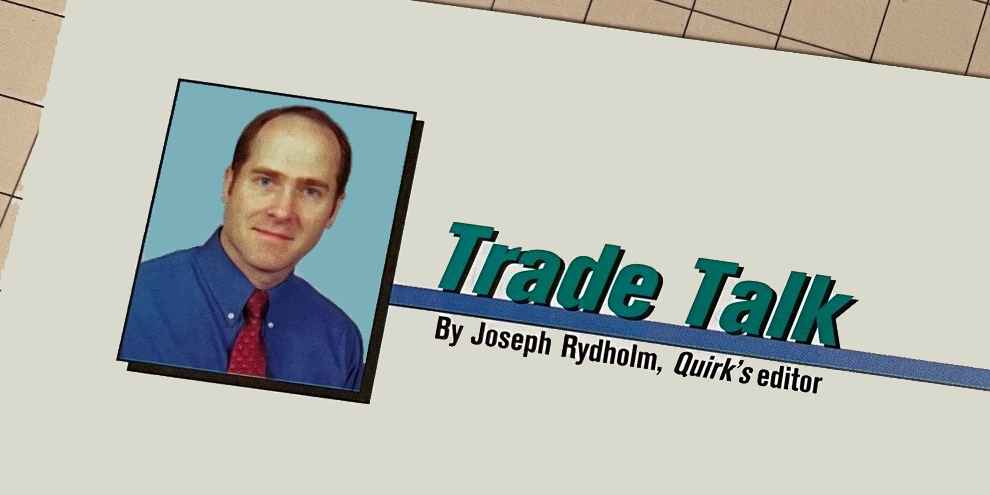For years, computer industry observers have preached the gospel that home computers, once they reached mass acceptance, would enrich our fives in myriad ways, bringing us unlimited educational and communication opportunities. In the beginning, that promise seemed to apply only to those who could afford to spend thousands of dollars on a PC. But now, with prices of well-equipped computers dropping below $1,000, will the pundits’ dreams become reality?
Computers may never reach the penetration levels of television (then again, who knows?) but even if they get close, the implications and opportunities for marketers are staggering. With an ever-expanding audience, the Internet (and the other, as-yet-unknown vehicles for computer-based commerce and communication that are sure to follow) may finally fulfill the potential that has so far eluded many companies that have dabbled in cyber-marketing.
To provide some perspective on the advent of the sub-$1,000 PC, we offer a two-part article which was compiled from several reports provided by Forrester Research, a Cambridge, Mass., firm specializing in the computer and high-tech industry.
Forrester defines cheap PCs as home computers that cost $999 or less and include a Pentium-class processor, CDROM drive, sound card, and a minimum 16MB of memory, 1GB hard drive, and 33.6Kbps modem. A monitor is not included.
To research this topic, Forrester spoke with executives from Acer America, AMD, America Online, Apple Computer, Avalon Software, Berkeley Systems, Compaq, CompUSA, Cyberian Outpost, CyberMedia, Dell Computer, Egghead Computer, Family PC magazine, Geoworks, Hewlett-Packard, HomePC magazine, IBM, Ingam Micro, Intel, Intemet Shopping Network, Intuit, Iomega, Juno, LSI Logic, LucasArts, Lycos, Micrografx, Micron, Microsoft, Monorail, National Semiconductor, Netscape, ONSALE, Packard Bell NEC, RCA/Thomson, Sony, Staples, and Teac.
Part I below explains how the sub-$1,000 price point came about and who’s buying all those inexpensive PCs. Next month, part II will cover the impfications for the computer industry and Internet marketing.
-Joseph Rydholm/QMRR editor
1997 was the year of cheap PCs. Vendors and retailers assert that 30 percent to 40 percent of consumer PCs sold in the United States during the last four months were priced below $999. But will this party last? Forrester Research predicts that:
- Cheap PCs will capture 55 percent of the U.S. consumer market by year-end 1999. The average selling price (ASP) of consumer PCs will drop below $599.
- Lower price points will increase U.S. household penetration as well as expand the number of homes with multiple PCs. By 2002, 60 percent of U.S. households will have at least one PC, while 22 percent will own two or more computers.
- The PC buying binge will last until 2001. By then, bitcrunching devices - from DVD players to HD-TV sets to home digital camera darkrooms -will vie for the 21st-century digital dollar.
In the past, frugal consumers could find products at this price point, but those systems were a generation behind and could barely run contemporary software. Today, Compaq, Packard Bell, Hewlett-Packard, and Acer hawk fully functional desktops that easily run Windows 95 and popular consumer applications like games and financial software. Only a few vendors abstain from this market: 1) financially troubled Apple; 2) corporate-focused Dell; 3) convergenceminded Sony; and 4) tentative Toshiba, which can’t decide whether or not to abandon the home-PC arena. For companies in the low-cost market, business thrives.
Forty percent of retail PCs sell for under $1,000. Manufacturers and retailers report that these devices account for anywhere from 30 percent to 65 percent of consumer purchases. The ASP for all home computers now runs around $1,200, and the industry expects it will continue to nose-dive.
First-time buyers lead the charge. The industry claims that 30 percent to 60 percent of cheap PCs go into households that do not already own a computer. Remaining units are bought as either replacements or supplements for households that currently have a system.
Retailers make money - but not on PCs. Low-cost systems create foot traffic but very little profit for merchants. Successful players may only make $20 on a cheap PC, but they can generate substantial profits from selling warranties, software, printers, and color inkjet cartridges.
Why is the sub-$1,000 PC thriving now? Three stars have aligned to create a fertile marketing environment for this new segment.
- Vendor infighting. Making money in this market becomes possible only with incredibly efficient operations and high volumes. Market leaders like Compaq, Packard Bell, and Hewlett-Packard willingly sacrifice margins for market share.
- Credible alternative microprocessors. Compaq and IBM use chips from AMD and Cyrix in their PCs because the clones offer Pentium performance for less than three-quarters of the cost. Microsoft supports Intel-compatible CPUs by promising to tweak Windows to take advantage of new features in next-generation clone chips.
- Stable applications. Today’s software rarely runs out of processing room. Windows 95 performs perfectly well on cheap PCs, and early tests show that its successor, Windows 98, will run even better on the same hardware. Cheap PCs offer plenty of horsepower for popular consumer software like Collier’s Encyclopedia or Intuit’s Quicken.
